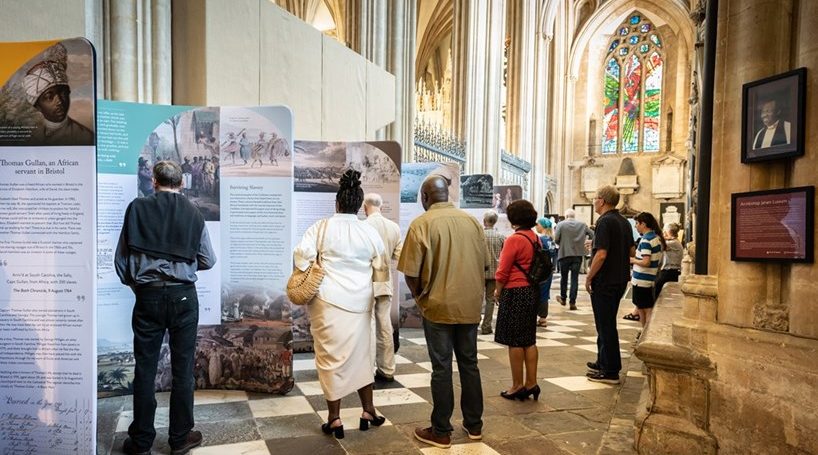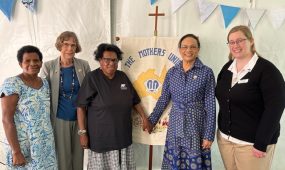A new exhibition was launched at Bristol Cathedral last week, as part of the cathedral’s effort to understand its links with the transatlantic slave trade. The intention is to “inform a wide-ranging conversation” about the past and to help to “repair and restore damaged relationships”.
Research commissioned for the exhibition “All God’s Children” found that, of the thousand or so people buried or memorialised in the cathedral and its grounds between 1670 and 1900, about 20 per cent had a close connection with the slave trade.
Two memorials are viewed as particularly challenging: the Edward Colston memorial window (News, 19 June 2020), and the memorial to Robert Codrington, described in the display as “one of the most powerful symbols of the Church of England’s willingness to profit from slavery”.
The exhibition has two parts. Inside the cathedral, a series of panels explores the cathedral’s connections with the slave trade through its memorial and grave-markers. Outside, on College Green, a series of portraits by the photographer Garfield McKenzie features comments and questions from Christians in Bristol, some of whom live with the legacy of slavery and experience racism today.
The exhibition is framed as a consultation. Visitors are asked to leave their feedback about what the cathedral should do next. For example, should the cathedral have a permanent exhibition? Should problematic monuments be removed or replaced with something new? A list of FAQs, information on modern slavery, and a prayer card are on hand to facilitate reflection.
“For hundreds of years many of the men and women who gathered in this Cathedral enslaved, bought and sold their sisters and brothers of colour,” an introductory panel says. “They exploited, raped and murdered them, and the exploiters did not see their actions as being incompatible with the Christian faith.
“We know that [the Cathedral] cannot be truly welcoming until the story of the painful legacy of slavery is told within these walls and until the contribution of all our sisters and brothers to our shared life is recognised.”
The Dean, the Very Revd Dr Mandy Ford, said last week that the need to address the legacy of the slave trade had become pressing after the toppling of the Colston statue in 2020 (News, 12 June 2020). “It became really clear that we had to do something. We had to do it now — and we had to get it right.”
There has been soul-searching in the city in the past two years: the city council has a legacy steering group, which ran a two-year initiative called Project Truth.
The cathedral exhibition has been in the planning for a year, helped by sponsorship from the Cathedral Trust and the Society of Merchant Venturers, which also has clear connections with the slave trade. “They, too, are on a journey,” Dr Ford said, “and a lot of our research will benefit them because they’re trying to understand who their members were.”
The Chapter commissioned a historian and museum consultant, Dr Katherine Prior, to conduct the research that forms the content of the display. “We’ve been hugely blessed by Katherine’s expertise, because not only is she very familiar with the Caribbean sources, but she’s also highly attuned to the sensitivities of what she’s doing,” Dr Ford said.
“And one of the things that I was determined was that, in doing this research, we wouldn’t just be researching the dead white people. What Katherine’s done . . . is to give story and dignity to those who were enslaved. That’s been really important.”
The issue went far beyond the infamous names, Dr Ford said. “I wanted us to be really clear that this isn’t about one or two bad boys. It’s just not all about Colston. No middle-class person in Bristol is untainted.”
The Colston window depicts the story of the Good Samaritan and includes the words: “Go thou and do likewise.” “There are one or two people who have said to me that they find that really offensive, and I can understand that,” Dr Ford said.
But whether the memorials would stay was an open question, she said. “We are taking a stance against racism, but we’re not taking a stance on memorials — because that’s what the whole purpose of the consultation is. I think I’m trying to be as undefended as possible, and to help our volunteers and staff to be able to inhabit that space.
First published on Church Times on 2 September 2022. Visit the Church Times website to subscribe today.






